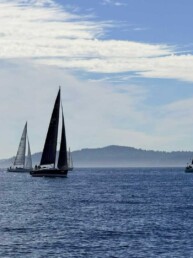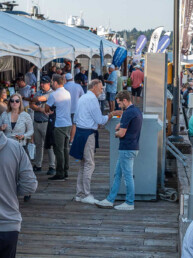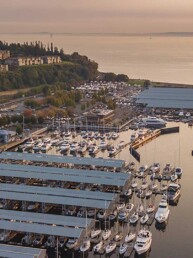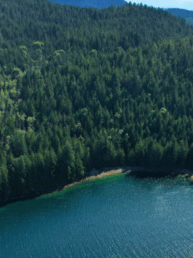For mariners heading north each year, Walsh Cove is a favorite destination.
This year, with the border closed, British Columbia boaters have had this pristine cove nestled in the middle of Desolation Sound all to themselves. Walsh Cove can be found on the northeast end of West Redonda Island about one nautical mile from the northern end of Waddington Channel.
Walsh Cove is one of the many marine parks that British Columbia has to offer. The park was established in 1989 and has a total of 39 hectares of upland and 46 hectares of foreshore for a total of 85 hectares. Being a marine park hasn’t taken away the beauty, mystery and spiritual aspects that Walsh Cove has to offer. Numerous boaters frequent this cove annually to enjoy the tranquility and unspoiled atmosphere. This marine park has many unique features in store for those that venture into this remote anchorage.
Getting There
You can reach Walsh cove by traveling north up Waddington Channel from Prideaux Haven or South down Waddington Channel, by turning right at Dean Point at the North end of Waddington Channel. It’s best to approach Walsh Cove from the south because the northern entrance into the cove, False Pass, is littered with rocks.
Walsh Cove consists of a number of small finger long islands, known as Gorges Island. This small island group shelters the anchorage from waves of the boat traffic transiting up and down Waddington Channel. Behind these islands you’ll find enough anchorage space for 15 to 25 boats.
Like numerous anchorages in Desolation Sound the depths in the middle of the cove are deep, but around the edges you can find shallower water. When the anchorage gets crowded, stern ties are a must. For those seeking a little more solitude, there are a number of small bites to the south of Walsh Cove that offers some protection from the winds that can whip up and down Waddington Channel.
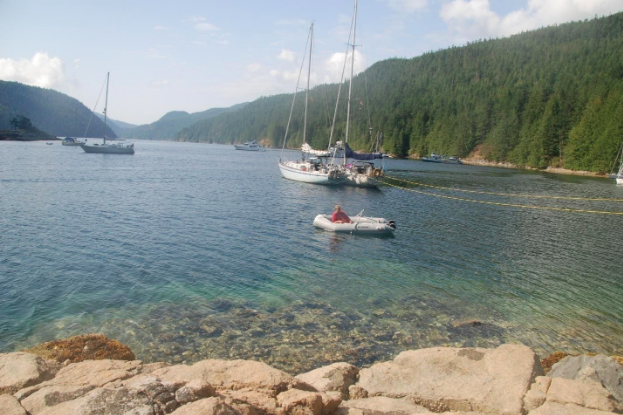
Explore the Cove
For the swimmers, the waters can be quite warm here at times. The finger long islands to the east of the cove offer many gentle sloping rocks that are mysteriously void of oysters. These angled swimming platforms warm the water as the tide comes in over the hot rocks during the summer months.
If you enjoy snorkeling, Walsh Cove has some great shallows and steep cliffs to explore. The crystal clear water lets you see to great depths. At low tide you can explore the shallow channels between the finger islands. If you venture into the cove at the northwest part of this marine park you might even find some old relics discarded from past logging operations.
For the oyster lovers it is no surprise to find them abundant in this marine park. If you have a passion for oysters I’d suggest you pick your oysters on the outside of the finger island where they get a good flush from the currents running up and down Waddington Channel.
You might find numerous prawn pots set out in the Waddington Channel. In years past I’ve pulled my shrimp pot and found numerous prawns in my pot, but other years I’ve found relatively few. So if you enjoy prawns on your menu then it might be worth putting down your pot out in the inlet. A couple summer ago I put my pot down on the east side of Waddington Channel and a little south of Walsh Cove. When I pulled it the next morning I found only a few shrimp, but a very unusual looking crab had its right pincher clinging tight to the mess of my pot. This crab looked very prehistoric. It was very big and round about ten inches across the back and spinny like a king crab. Its legs where short and then folded up underneath that body in little indentations specifically molded for each leg. When I grabbed the crab it folded up much like a turtle might do, by pulling its legs up tight to its underbelly. We decided this crab was a Brown box crab and returned it back to its deep sea home.
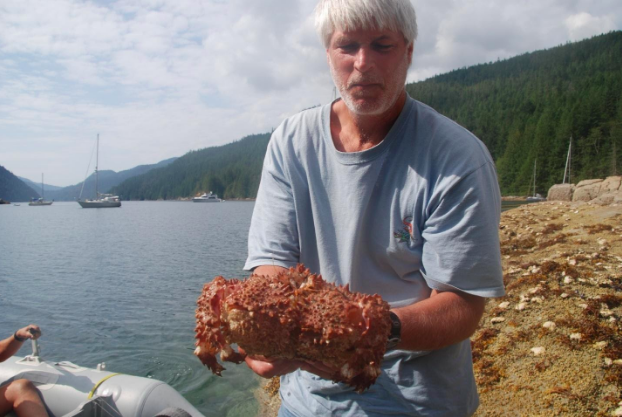
For those that enjoy cliff diving, the biggest Gorges Island offers a number of launching points. But I would suggest you first scope out your landing spots with a face mask and snorkel prior to taking the plunge. I’ve heard numerous stories of people being injured from diving by not first picking an appropriate location for their free flight drop into the water below.
History Abounds
Walsh Cove has been a popular place for centuries. At the northern entrance to the cove, a number of different pictographs can be found. The artwork most likely was left by one of the coast Salish bands of the first nation. The ancient artist left images of fish, people, and numerous other symbols on the rock cliffs. Also, if you venture out of your dinghy along the shoreline, up next to the cliffs you can find soot cover cliffs, and overhangs as well also some midden piles. I assume the people of the first nation cooked their oysters, mussels, clams, crabs, fish, and other bounties they gathered from the sea. These high cliffs and overhangs also might have offered protection from harsh rains and winds that this area is known to get during the winter months.
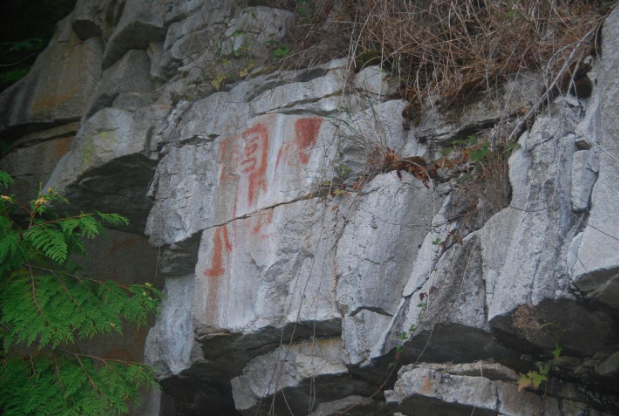
One of my cruising guides describes that high grade pink granite was discovered in this cove in 1885. I was not able to visual find any evidence that supported granite was mined from this location, but in a small shallow cove at the north end of the park you can find artifacts left by turn of the century logging operations in the form of rusty old logging machinery. Also there, you’ll find a small stream that someone long ago placed a steel pipe in to create a water spigot where you can fill a water jug or solar shower. Of course, if you plan to use this water for drinking it would be wise to treat it or boil it to kill any harmful organisms.
The landscape surrounding the stream has a gentile uphill slope, and is quite open once you get through the small amount of brush surrounding the beach. If you are adventurous, you can do some short trekking up into this lush moss-covered landscape without too much trouble. In amongst the moss covered fallen trees you’ll find many old cedar stumps from the turn of the century logging operations. You can still make out the unmistakable chop marks that reveal how these old growth trees where cut down the old fashion way with springboards and buck saws. Many of these old stumps are nursing new trees that have sprouted toward the heavens.
Year after year many boats trek up Waddington Channel or down Pryce Channel for turn at Dean Point bound for Walsh Cove. Each time I stay here I’m reminded of the beauty and history this cove has to offer. If you haven’t stopped here before you should put it on your list of destinations to explore once the border opens. Walsh Cove is truly one of Desolation Sound and British Columbia’s marine park jewels.
Greg Larsen
Cruiser/Racer with a lifetime of sailing experience, Greg and his family have been cruising the waters of the Salish Sea from Olympia to Alaska for decades.

